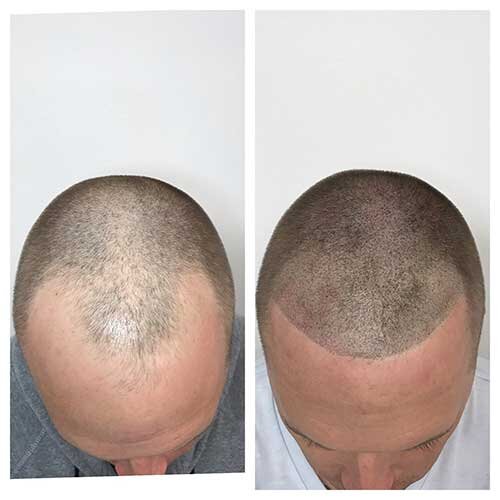Hair micropigmentation (SMP) has gained popularity as an effective solution for individuals dealing with hair loss or thinning hair. It is a non-invasive procedure that replicates the appearance of hair follicles, providing the illusion of a shaven head or increased hair density. While SMP offers numerous benefits, it is important to be aware of potential disadvantages before considering this procedure. This article aims to highlight some of the drawbacks associated with hair micropigmentation.
- Semi-Permanent Solution: One significant disadvantage of SMP is that it is a semi-permanent procedure. While this can be advantageous for individuals who may want to change their hair color or style in the future, it also means that SMP requires regular touch-ups to maintain its optimal appearance. The pigments used in SMP are designed to gradually fade over time, typically lasting between two to five years. Consequently, individuals considering SMP must be prepared for the ongoing commitment and associated costs of touch-up sessions.
- Limited Hairstyling Options: Once SMP is performed, it restricts the variety of hairstyles that can be achieved. The purpose of SMP is to replicate the look of a shaven head or denser hair, so it is not suitable for individuals seeking long or varied hairstyles. While SMP can be combined with existing hair for a more natural appearance, it is important to understand that certain styles, such as longer hair or updos, may not be achievable or may require additional techniques to camouflage the SMP dots.
- Need for Experienced Practitioners: Hair micropigmentation is a highly specialized procedure that requires skill and expertise to achieve desirable results. Unfortunately, not all practitioners have the necessary experience or training in SMP. The success of the procedure heavily relies on the practitioner’s ability to accurately replicate natural hair follicles and create a seamless and realistic appearance. Choosing an inexperienced or unqualified practitioner increases the risk of unsatisfactory outcomes, such as unnatural-looking dots, uneven pigment distribution, or color mismatches.
- Potential for Side Effects: While SMP is generally considered a safe procedure, there is still a potential for side effects and complications. Common side effects may include temporary redness, swelling, or minor discomfort immediately after the procedure. In rare cases, individuals may experience more severe reactions, such as infections, allergic reactions to pigments, or scarring. To minimize these risks, it is crucial to select a reputable and experienced SMP practitioner who follows proper hygiene protocols and provides thorough aftercare instructions.
- Not a Suitable Option for Everyone: Hair micropigmentation may not be suitable for everyone dealing with hair loss or thinning hair. Individuals with certain skin conditions, such as psoriasis or eczema, may experience adverse reactions to the pigments used in SMP. Additionally, those with very fair or light-colored hair may find it challenging to achieve a natural-looking result with SMP, as the pigments are typically designed to match darker hair colors. It is important to consult with a qualified SMP practitioner to determine if you are a suitable candidate for the procedure.
In conclusion, hair micropigmentation can be a beneficial solution for individuals struggling with hair loss or thinning hair. However, it is essential to consider the potential disadvantages associated with SMP. These include the semi-permanent nature of the procedure, limited hairstyling options, the need for experienced practitioners, potential side effects, and the fact that SMP may not be suitable for everyone. By understanding these drawbacks and conducting thorough research, individuals can make informed decisions about whether hair micropigmentation aligns with their aesthetic goals and expectations.
